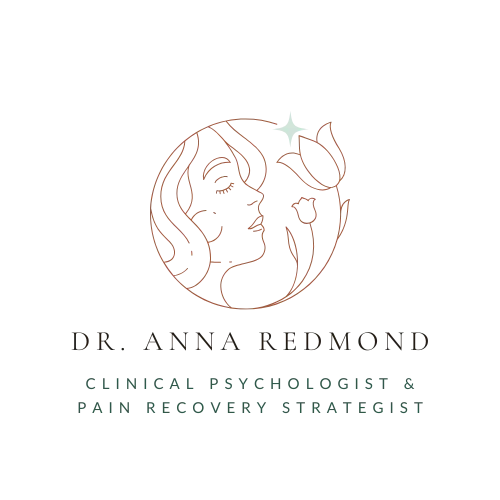Connect with me!
Tell me the number one thing that you want to understand about your pain?

The return of the repressed.
Pain and our emotions are more connected than we think.
When you step on a nail, it FEELS like the pain is in your foot, but it’s really in your brain.
The scientific community agrees that repressing emotions has a negative impact on our health as a whole, weakening the immune system, resulting in physical symptoms like chronic pain, or resulting in mental illness like depression. We even know that repressing emotions strong emotions can cause an inflammatory response in the body.
Dealing with emotions is an important part of managing chronic pain or any other chronic illness.
For one, we know that emotions such as anxiety, depression, and anger can amplify someone’s pain experience. For another, we know that intense emotions or stress can result in physical symptoms in the body. This isn’t new, and we’ve discussed it here before.
When we experience stress, our sympathetic nervous system turns on, and immediately the body responds physically with an increased heart rate, tense muscles, clammy skin, cold extremities, and rapid breathing. When we don’t move out of this state, the nervous system recruits other protective systems like the immune system or the digestive system. When we stay in fight or flight mode, chronic pain can be the result.
Suppressing emotions regularly or for many years can result in our nervous system remaining in fight or flight mode.
Try this:
- Express your emotions through journaling each day, enhancing the relationship between your sympathetic and parasympathetic nervous systems, providing a better balance, and strengthening your mental and physical health.
- If it feels relevant for you, you could begin a daily practice writing about painful memories as a way of releasing them from your body. If this is too distressing to perform or think about, it may be best done in the company or with the support of a mental health provider.
When emotions are released, we are changing neural pathways in our brain.
If you’ve found that your pain has worsened over the years, that it never leaves you, that it has spread to more areas of your body, that new doctors + new treatments has not resulted in improvement, or that it has become more sensitive over time…'
… consider how your body may also be expressing new or longstanding emotions in a physical way.
So, maybe, your pain is in your back, but your back is ALSO a storage area for emotions that you are repressing, having difficulty dealing with, or hiding from yourself for protection.
Remember, your pain is real REGARDLESS of the root cause or any factors (such as emotions) that may be maintaining it. Your pain is multidimensional and as unique as you are.
Education provides the power to take the next step in managing your pain. You want to do the things you enjoy (or even basic daily activities) without flaring up your pain. For a limited time, you can grab my free video tutorial to get you started:
3 Simple Steps to a Balanced Day... Without the Flare-Ups.
This free video tutorial is dedicated to helping women with pain begin to find confidence to return to the moments, activities, and people they love the most.
Thanks for following along! Stay tuned for more digestible bits of chronic pain education here and on Instagram. Thank you for being part of this community!
© 2024 | Anna Redmond, LLC | drannaredmond.com
